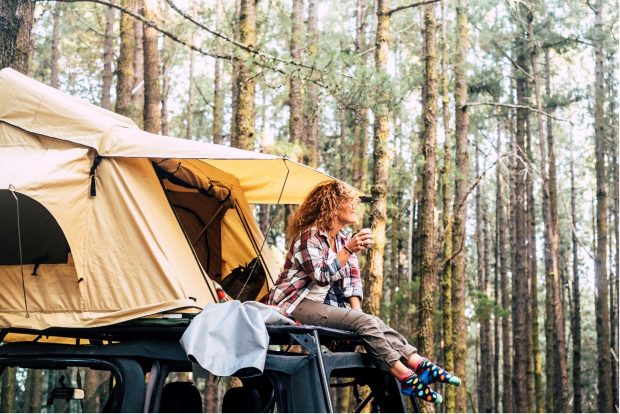Before you start your overlanding adventure, you’ll need to navigate through an assortment of possible rooftop tents. Choosing the correct design can make or break your camping adventure.

If you’re a newcomer to rooftop camping, this guide is for you. We’ve got the best tips on choosing the perfect rooftop tent for your next adventure.
Type of Tent
Roof top tents are available in two specific designs. You can choose between a hard-shell rooftop tent or a soft-shell rooftop tent. There are some hybrid models available on the market as well.
Each different design has its advantages and disadvantages. Choosing the right design for you is based on a few key elements of your trip.
Advantages of Hard-Shell Rooftop Tents
Usually hard-shell tents are tapered at an angle. This provides minimal wind resistance and can improve your gas mileage. The hard top also keeps you less exposed to the elements of the terrain you’re traveling.
Setting up a hard-shell tent is much easier than setting up a soft-shell design. With a quick flip of a ladder and a couple panels and you’re done.
Disadvantages of Hard-Shell Rooftop Tents
Hard-shell tents are much heavier than their soft-shell counterparts, which lends credibility to the gas mileage argument. Having a hard-shell tent means you’ll need a higher-rated roof rack.
You’ll also have less space on your roof for other cargo. Hard-shell designs will take up much of the available roof space.
Advantages of Soft-Shell Rooftop Tents
Choosing a soft-shell design means you could have almost half of your roof available for carrying extra cargo. These light-weighted versions are also much easier on the top of your vehicle.
Some soft-shell tents also have extended panels that drape over the back of the vehicle. This is a great space to utilise for shade on hot days.
Disadvantages of Soft-Shell Rooftop Tents
You won’t have as much protection from nasty weather elements with a soft-shell design. Things like hail or high winds could still potentially damage these models.
Setup takes a substantially longer amount of time with a soft-shell design. If you arrive late or are in a rush, this could be a disadvantage.
Depending on where you’re going and what you’re carrying, deciding on which design works for you should be easier. If it’s in the budget, experiment with both models. It never hurts to have a rotation of rooftop tents on hand. Check out your nearest 4×4 accessory store and ask for advice if you need to.



